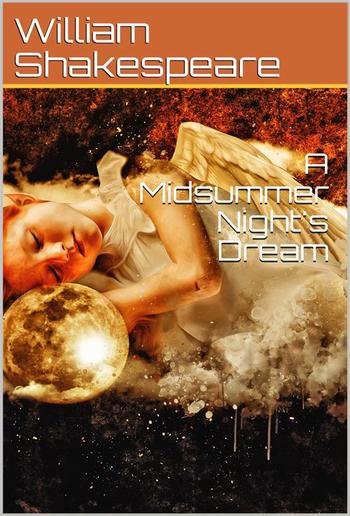
William Shakespeare - A Midsummer Night's Dream
A Midsummer Night's Dream
William Shakespeare
Beschreibung
A Midsummer Night's Dream is a comedy written by William Shakespeare in 1595/96. It portrays the events surrounding the marriage of Theseus, the Duke of Athens, to Hippolyta (the former queen of the Amazons). These include the adventures of four young Athenian lovers and a group of six amateur actors (the mechanicals) who are controlled and manipulated by the fairies who inhabit the forest in which most of the play is set. The play is one of Shakespeare's most popular works for the stage and is widely performed across the world.
The play consists of four interconnecting plots, connected by a celebration of the wedding of Duke Theseus of Athens and the Amazon queen, Hippolyta, which are set simultaneously in the woodland and in the realm of Fairyland, under the light of the moon.
The play opens with Hermia, who is in love with Lysander, resistant to her father Egeus's demand that she wed Demetrius, whom he has arranged for her to marry. Helena, Hermia's best friend, pines unrequitedly for Demetrius, who broke up with her to be with Hermia. Enraged, Egeus invokes an ancient Athenian law before Duke Theseus, whereby a daughter needs to marry a suitor chosen by her father, or else face death. Theseus offers her another choice: lifelong chastity as a nun worshipping the goddess Artemis.
Peter Quince and his fellow players Nick Bottom, Francis Flute, Robin Starveling, Tom Snout and Snug plan to put on a play for the wedding of the Duke and the Queen, "the most lamentable comedy and most cruel death of Pyramus and Thisbe". Quince reads the names of characters and bestows them on the players. Nick Bottom, who is playing the main role of Pyramus, is over-enthusiastic and wants to dominate others by suggesting himself for the characters of Thisbe, the Lion, and Pyramus at the same time. He would also rather be a tyrant and recites some lines of Ercles. Bottom is told by Quince that he would do the Lion so terribly as to frighten the duchess and ladies enough for the Duke and Lords to have the players hanged. Snug remarks that he needs the Lion's part because he is "slow of study". Quince ends the meeting with "at the Duke's oak we meet".
In a parallel plot line, Oberon, king of the fairies, and Titania, his queen, have come to the forest outside Athens. Titania tells Oberon that she plans to stay there until she has attended Theseus and Hippolyta's wedding. Oberon and Titania are estranged because Titania refuses to give her Indian changeling to Oberon for use as his "knight" or "henchman", since the child's mother was one of Titania's worshippers. Oberon seeks to punish Titania's disobedience. He calls upon Robin "Puck" Goodfellow, his "shrewd and knavish sprite", to help him concoct a magical juice derived from a flower called "love-in-idleness", which turns from white to purple when struck by Cupid's arrow. When the concoction is applied to the eyelids of a sleeping person, that person, upon waking, falls in love with the first living thing they perceive. He instructs Puck to retrieve the flower with the hope that he might make Titania fall in love with an animal of the forest and thereby shame her into giving up the little Indian boy. He says, "And ere I take this charm from off her sight,/As I can take it with another herb,/I'll make her render up her page to me."
Read this complete famous novel for further interesting story....

